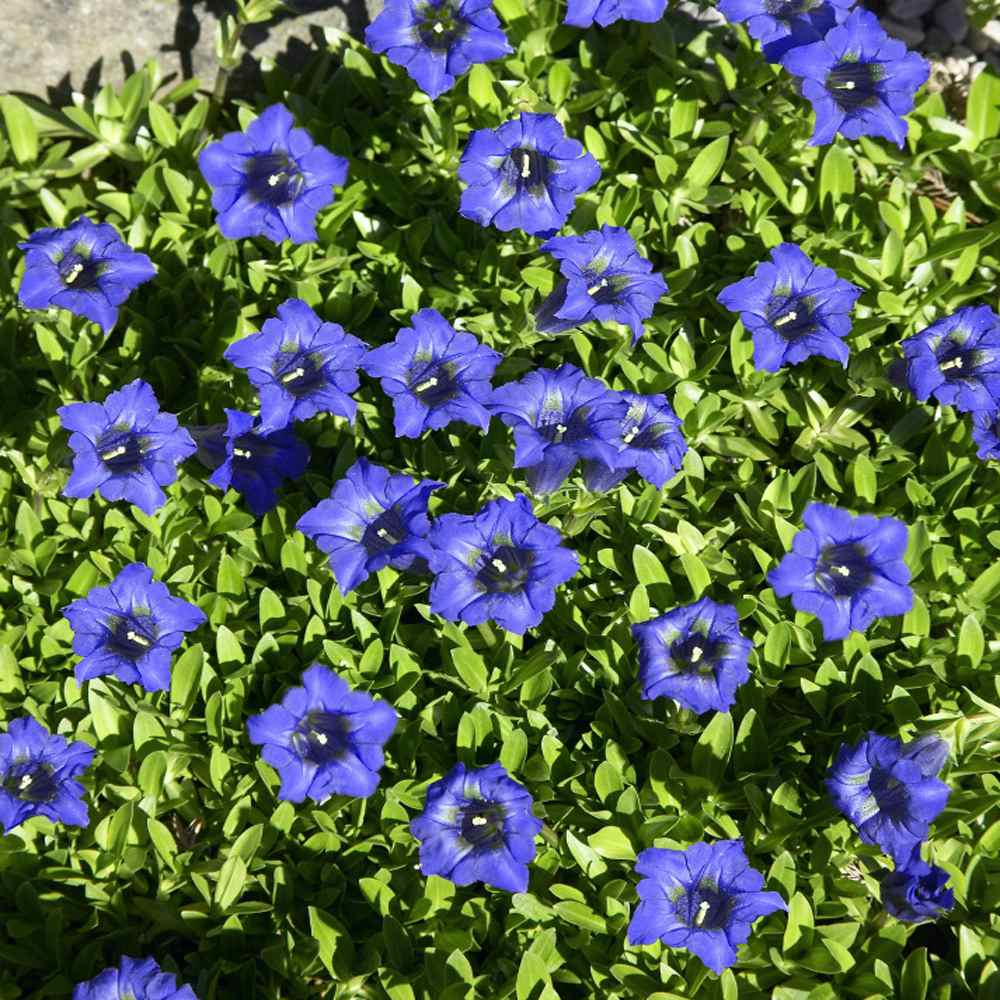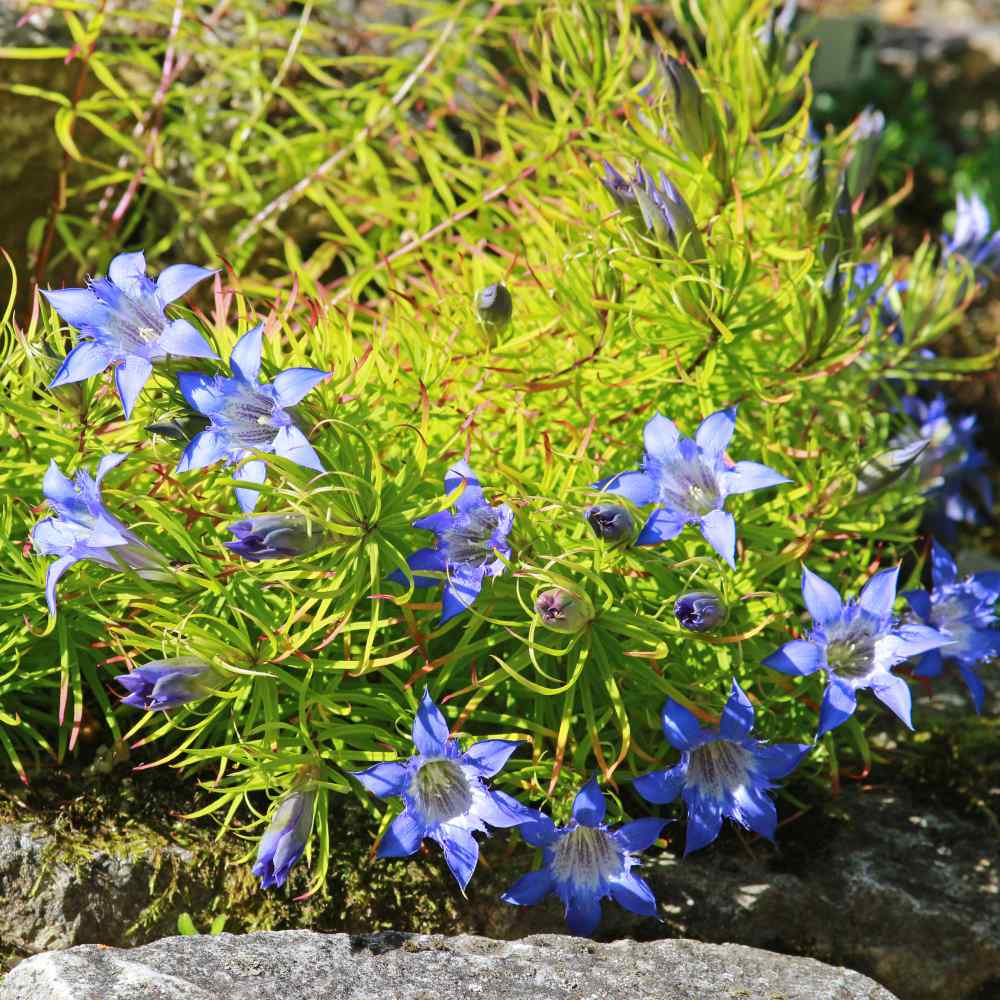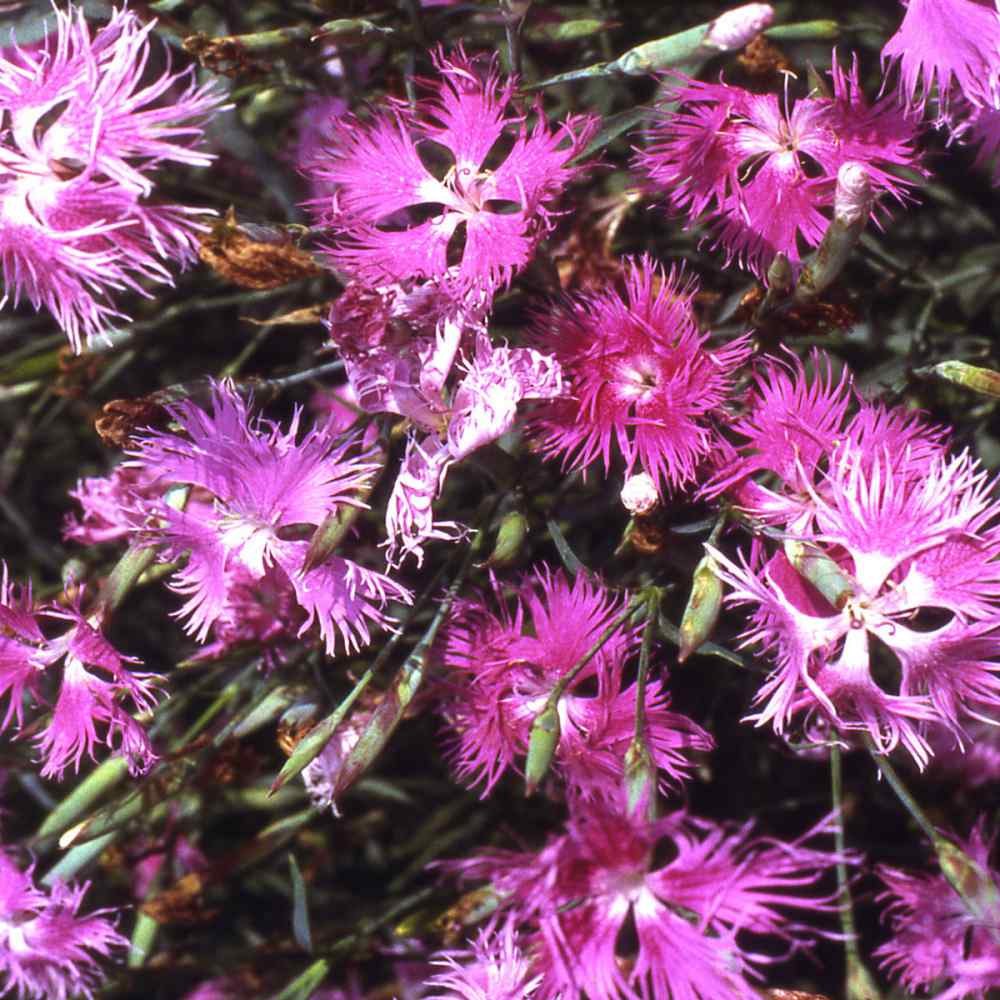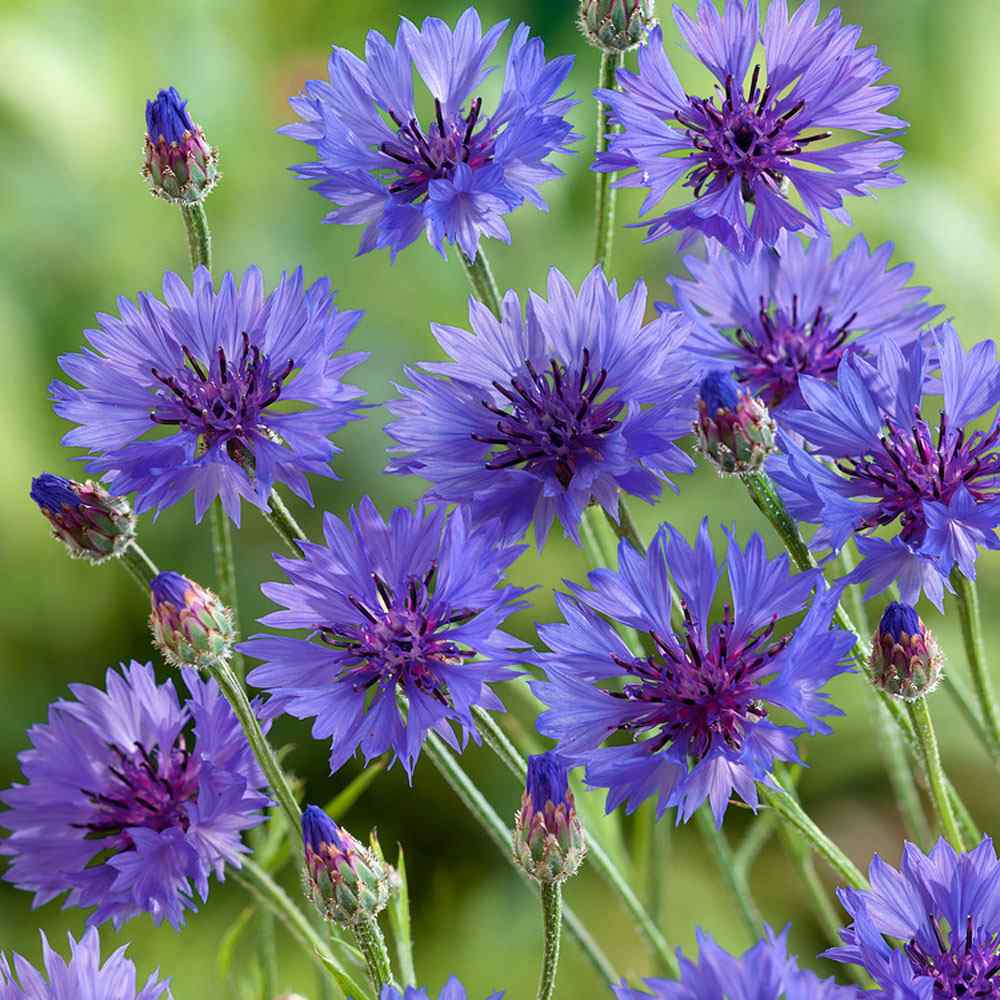
Gentian Planting and Care Guide
Quick Facts About Gentian
Gentian is a perennial flowering plant that grows best in moist soil. Most varieties produce blue flowers, and they are commonly used to make dyes. The roots are also used in traditional medicine.
Planting Time
Gentian seeds grow best after a cold stratification treatment. Treated seeds can be started indoors in late winter, or the seeds can naturally stratified by sowing directly outdoors in autumn.

Planting Location
In cooler climates, Gentian can grow in full sun, but it otherwise should be grown in partial shade. Grow Gentian in humus-rich soil that is moist but well-drained.
How to Grow Gentian
- Gentian seeds germinate best after a cold stratification treatment. This can be done manually by mixing the seeds with soil inside a plastic bag, and refrigerating for 2 months. This can also be performed naturally by sowing the seeds outdoors in autumn, allowing the cold weather to prepare the seeds.
- If starting indoors, use trays or small pots filled with a seed starter mix.
- If starting directly outdoors, first prepare a seedbed by weeding and breaking up the soil, or use starter trays. For fall planting, it can be ideal to sow the seeds in a cold frame or protected area.
- Surface sow 5-8 seeds per plant, then press into the soil.
- Keep seeds moist until germination, and maintain a temperature of 60-70F degrees. Even under proper conditions, germination can be erratic, but ideally occurs within a month.
- Once indoors seedlings have their first few sets of true leaves, they can be transplanted outdoors after all danger of frost has passed.
- Before transplanting seedlings into the garden, it's essential to "harden them off". This involves acclimating young plants to outdoor conditions by placing them in a sheltered outdoor area for about a week. Initially, shield them from strong winds and direct sunlight. If there's a risk of frost overnight, either cover the plants or bring them indoors, then return them outside in the morning. This hardening off method helps strengthen the plant's cell structure, minimizing transplant shock and sun damage.
- Due to its root system, Gentian does not divide or transplant well once established.

Care And Maintenance
- Keep weeds under control during the growing season. Weeds compete with plants for water, space and nutrients, so control them by either cultivating often or use a mulch to prevent their seeds from germinating.
- Mulches play a vital role in preserving soil moisture and ensuring consistent soil temperatures. When it comes to annuals, using organic mulch made from shredded leaves not only enhances the appearance of the bed but also enriches the soil as it decomposes over time. Remember to keep mulch away from the plant stems to avoid potential rot issues.
- Gentian should be watered regularly, especially while establishing. Adding a layer of mulch can help the soil consistently retain moisture.
- Fertilization is largely unnecessary, but an application of compost at the beginning of the growing season can be beneficial.
- Pruning generally isn't necessary, but the crown can be cut down to the ground once dormancy sets in.




































